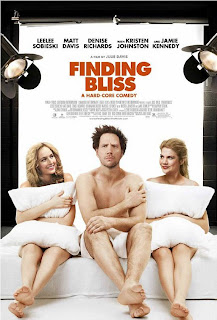Men Pruning at Sea: "Finest Hours" a well-intentioned but less-than-rousing yarn
The Finest Hours (2016)
117 min., rated PG-13.
There is a ripping seafaring disaster yarn to be made about “the greatest small boat rescue in Coast Guard history,” but “The Finest Hours” isn’t quite it. Though it’s based on a true story—and an incredible one, yes—the film rarely tries to dig beneath the shallow characters and doesn't impress much with the glossiness of the wave effects. As squarely directed by Craig Gillespie (2014’s “Million Dollar Arm”) from a screenplay written by Scott Silver and Paul Tamasy & Eric Johnson (2010’s “The Fighter”), based on Michael J. Tougias and Casey Sherman’s 2009 book, this old-fashioned maritime drama isn’t anything more than competently rousing as a cinematic vessel for spectacle and nautical thrills. It’s not that it is a bad film but any memory of it will be blown away in less than a month.
On February 18, 1952, a nor’easter hit off the coast of New England, ripping in half two T-2 oil tankers at sea. The SS Pendleton would begin to sink rapidly and take its 32 men down with it. With a contrarian member trying to sway the rest of the crew to drop the lifeboats, which would be crushed by the treacherous waves, it would be up to engineer Ray Sybert (Casey Affleck) to take charge and run the ship aground while waiting for help to come. When word of the SS Pendleton’s situation reaches the U.S. Coast Guard station in Chatham, Massachusetts, Chief Warrant Officer Daniel Cluff (Eric Bana) orders a rescue mission, sending out by-the-book Coast Guard Captain Bernie Webber (Chris Pine) and three other seamen—Richard Livesey (Ben Foster), Andrew Fitzgerald (Kyle Gallner) and Ervin Maske (John Magaro)—in a 36-foot wooden lifeboat. Meanwhile, Bernie’s switchboard-operating fiancée Miriam (Holliday Grainger) waits back home at Wellfleet, hoping her boatswain returns after his operation. As they say in the Coast Guard, “you got to go out, but you don’t have to come back in.”
What should be even more dramatically grabby, “The Finest Hours” is only ever a safe outline of a movie. The film actually begins a year before the storm, tracking Bernie’s courtship with Miriam on a blind date. She’s scared of the water, especially at night, but he takes her out on a boat. Once they’re in love, Miriam is the one to propose to Bernie, but as a formality, he still has to get his commanding officer’s permission to marry. Though the film didn’t need any extra drama, director Craig Gillespie eventually cuts back and forth between the Pendleton, Bernie's “suicide mission,” and Miriam fretting on land. As for the leading up to the rescue and the rescue itself, it’s harrowing enough, but everything following it is very quickly anticlimactic. Wading into cornball schmaltz that’s laid on thick like clam chowder, the conclusion reaches for audience applause but doesn’t quite grasp the sort of affecting emotional pull it needs.
The cast is still solid—it’s Character Actor Central—and everyone seems to bring dignity and conviction, as well as on-par accents that won’t embarrass the actors’ accent coaches. Chris Pine initially doesn’t seem comfortable in an aw-shucks mode as Bernie Wedder, but he is still a likable anchor (no pun intended). Casey Affleck is also a standout as Ray Sybert, a loner with no family back home who has to make the executive decisions. As for other members of the cast, the script affords them few opportunities to develop their characters with more than a single broad stroke. Miriam actually comes out being the one compelling character that brings the most human touch a film like this calls for, and she's on dry land for all of it. She is assertive and has real moxie for the time, and British actress Holliday Grainger (who looks like a younger Gretchen Mol crossed with a glamorous starlet of the ‘50s) brings a lovely spark to the role.
By the standards of a dramatization of a tough story produced by the Mouse House, “The Finest Hours” does exactly what it says on the tin. It’s a predictable, well-intentioned based-on-a-true-story offering that’s watchable but not overwhelming. The costumes and production design, steeped in the look and feel of the period, are perfectly fine across the board. Then again, the digital visual effects of the ferocious waves aren’t entirely seamless, sometimes too slick to be convincing or arouse nail-biting excitement, especially when Bernie’s lifeboat takes a tumble under the water as if it were a submarine. Let’s just say the spectacular effects in “The Perfect Storm” run circles around these. Indifference was probably not the intended feeling in the end, and when one tries recalling if he or she saw “The Finest Hours” in a couple of months, the answer will probably be something like, “That was the boat movie, right?”
By the standards of a dramatization of a tough story produced by the Mouse House, “The Finest Hours” does exactly what it says on the tin. It’s a predictable, well-intentioned based-on-a-true-story offering that’s watchable but not overwhelming. The costumes and production design, steeped in the look and feel of the period, are perfectly fine across the board. Then again, the digital visual effects of the ferocious waves aren’t entirely seamless, sometimes too slick to be convincing or arouse nail-biting excitement, especially when Bernie’s lifeboat takes a tumble under the water as if it were a submarine. Let’s just say the spectacular effects in “The Perfect Storm” run circles around these. Indifference was probably not the intended feeling in the end, and when one tries recalling if he or she saw “The Finest Hours” in a couple of months, the answer will probably be something like, “That was the boat movie, right?”
Grade: C +












Comments
Post a Comment